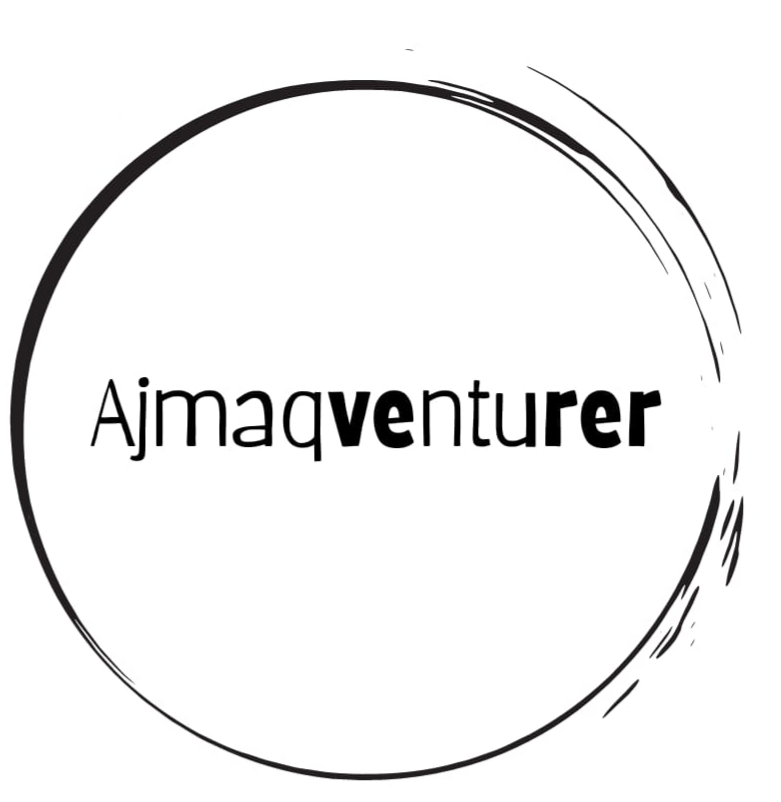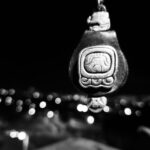Hasta la Raíz by Natalia Lafourcade

Dear readers, It’s another song. A profound one. Hasta la Raíz. It was released almost 10 years ago by the majestic Natalia Lafourcade, a Mexican musician and songwriter. I have always known the song was there. The oh-uh-oh, uh-uh-oh, oh-oh bridge is a kind of harmonic earworm which I don’t mind swirls around my head for a good few hours. Then, in the last month or so, I was in a coffee shop named Varietal in Tegucigalpa that I frequent regularly to do remote work and just relax and scoff their cheesecakes with gastronomic lust. The baristas have a great music taste, and on this particular afternoon close before closing my laptop for the day, this song came along on the playlist. As stated, I’ve always known the song was there and it’s such a pleasant earworm, but I’d never paid much attention to the lyrics. Since then, they’ve haunted me, but in such a profound way. Hasta la Raíz I keep crossing rivers, walking jungles, loving the sunSigo cruzando ríos, andando selvas, amando el solEvery day I continue to get thorns from the depths of the heartCada día sigo sacando espinas de lo profundo del corazón At night I keep lighting dreams to clean with the sacred smoke, every memoryEn la noche sigo encendiendo sueños para limpiar con el humo sagrado, cada recuerdo When I write your name in the white sand, with a blue backgroundCuando escriba tu nombre en la arena blanca, con fondo azulWhen I look at the sky in the cruel way from a gray cloud, you appearCuando mire el cielo en la forma cruel de una nube gris, aparezcas túOne afternoon I climbed a high hill look at the past, you will know that I have not forgotten youUna tarde suba una alta loma mire el pasado, sabrás que no te he olvidado Chorus I carry you insideTe llevo dentroto the rootHasta la raízAnd, no matter how much I growY, por más que crezcaYou’re going to be hereVas a estar aquí Although I hide behind the mountain and find a field full of caneAunque yo me oculte tras la montaña y encuentre un campo lleno de cañaThere will be no way, my moonbeam, for you to leaveNo habrá manera, mi rayo de luna, que tú te vayas Bridge Oh-uh-oh-oh, oh-ohOh-uh-oh-oh, oh-ohOh-uh-oh-oh, oh-ohOh-uh-oh-oh, oh-oh I think that every moment survived while walking Pienso que cada instante sobrevivido al caminarAnd every second of uncertainty every moment of not knowingY cada segundo de incertidumbre cada momento de no saberThey are the exact key to this fabric what I am carrying under my skinSon la clave exacta de este tejido que ando cargando bajo la pielThis is how I protect you, here you are still inside, Así te protejo, aquí sigues dentro, Chorus Chorus repeated Bridge Chorus Like all forms of art, you can resonate with the words in different ways. For me, it makes me think of those who I love and cherish, but for one reason or another, aren’t physically close, but remain part of me, spiritually or metaphysically. An unbreakable bond, so to speak. It captures themes of love, heartbreak and resilience, reflecting a deep connection to her roots and identity. Lafourcade described the song as a journey through her emotions and experiences, which I certainly identify with, especially the heartbreak and resilience, as do many who enjoy the song, which I believe is key to the song’s huge popularity. It is a certainty in life that we will suffer loss at some point, yet the song gives a sense of comfort and healing to move on. It’s rare a song can have such a deep impact on me, both lyrically and through its soft folkloric melody, but it also has a wonderful feminine touch. Thoughts of my dad, family and friends across the world, former loves, partners or colleagues or children and youths I’ve worked with, wondering what they are doing with themselves when I hear the song. I then came across a version on YouTube, created by a number of artists throughout Latin America through a multimedia musical project called Playing for Change, a project to inspire, connect, and bring peace to the world through music. Usually, I’m a bit skeptical of projects like this for some reason, but this version blows me away, especially reading it is a tribute on International Day of the Disappeared (which falls on 30th August) to those who are missing or suffering the loss of someone who has disappeared, whether it be armed conflict, climatic reasons or missing en-route to the US. At the beginning of the video are some accounts of people who have loved ones missing. It hits me deeply. It reminds me of the dozens of people I have met in Honduras both through my line of work but also in everyday life, who have lost someone, but are also missing from loved ones themselves. I remember speaking to a neighbour when I lived in Miraflores in Tegucigalpa, who told me how her brother and nephew went missing one night. They were en-route to San Pedro Sula in the north of the country, but they never made it, and she never found out why. There was no sign of the car or their bodies. No one knew or understood, and it happened two years before she told me, back around 2017. She feared the worst, but she hadn’t given up hope of seeing them again. It also reminds me of speaking to youths when I worked at Casa Alianza, who were forced to leave their families for one reason or another, whose parents had gone to live in the US and they had no idea where they were, or themselves had tried to go to the US, been deported and were too ashamed to return home because their parents had spent their life-savings trying to go there. It struck me deeply. I’ve never forgotten those stories, which make me feel so tied and connected to
Discovering Jazz in Tegucigalpa: My Midweek Escape

Dear readers, The past couple of Wednesdays, I have gone to a jazz night in Tegucigalpa at a place called Hibriduz, a place found on the recommendation from a drunk musician a few weeks ago. I must admit, jazz isn’t my go-to genre, nor am I an expert. It’s nice to listen to and unwind, do art or writing, and submerge in an ambience of improvised melodies, but I wouldn’t be able to tell you the difference between Duke Ellington and Miles Davis. My Uncle Patrick West, a jazz musician based in Glasgow, will be reading this shaking his head with extreme disappointment at his nephew’s ignorance of jazz. He believes that jazz music caused the Big Bang and created the universe, and God resides in his sax i.e. heaven. Yes, a true jazz spiritualist, Pat is. Hopefully, I redeem myself by continuing with this post. I go to jazz night to relax. Work can be tough so it is nice to have a glass of red and let the jazz musicians do their thang while my mind unwinds from its chaos. It feels wonderful, especially in the humidity of the rainy season in the tropics. Hondurans from the north of the country are probably frowning at these very words. “What humidity, chele? Come to Jan Pedro Jula! We’ll jhow you humidity.” [The swapping of the j for the s is a Honduran inside joke. Just speak to a Jampedrana/o: a person who originates from San Pedro Sula. You’ll find out why]. Jokes aside, it’s a nice midweek thing to do, and then get to meet the musicians afterwards. They are actually from a jazz school. The trombonist is the profe: the teacher, as you might have guessed, a Nicaraguan. Then there is a guitarist, who seems to be the spokesperson the group, sometimes, joined by a pianist and saxophonist. But what impresses me most is the bassist and the drummer, who I was informed they are 17 and 16 years old, respectively. They’re quite something. Not only am I in awe of their talent, but also their discipline and skill to improvise. They’re beyond their years in terms of maturity and seem blessed with quiet confidence and ease to perform with such jazz-like coolness. Yet they left me envious and a little regretful that I never really kept up with the piano from my youth (I can still play Ode to Joy, but there are only so many times I can repeatedly play it to impress the ladies), and I often too lazy and ill-disciplined to pick up the acoustic guitar, which sits half a metre away from my bed where I write these very words. I’d love to pick it up and strum like Noel Gallagher, but like I say: laziness. It sits there, staring at me, filling me with guilt. Bastard. Back to jazz band: I have enjoyed the evenings I have attended, but I have also enjoyed taking black and white photos while the band plays. Not to give myself a giant pat on the back, but I’m pleased with how they’ve turned out. While doing so, I felt inspired to write a poem, something I’ve not done in years. Just caught in the moment, I suppose, when the band performed a jazz version of the famous Mexican bolero, Bésame Mucho – Kiss Me A Lot. For those not in the know, it was written by Consuelo Velásquez in 1940 and first sung by Emilio Tuero a year later. It has since been performed by famous musicians around the world, including the Beatles, Frank Sinatra, Elvis Presley, Luis Miguel, Andrea Bocelli, Nat King Cole, Julio Iglesias, Natalia Lafourcade and Diana Krall, but one of my favourite versions was by Mexican band, Zoé, who originate from Cuernavaca, Mexico, a city I know very well through my work with Nuestros Pequeños Hermanos, which was also founded in the city. It was beautiful to hear this jazz version; especially as the melancholic melody reverberated into the humid night sky. Enjoy. Wednesday Night Cup of wine In my hand. A drop rain Moistens the stand. The band stroll out: No intro needed. Calm urgency, Shirts loosely fitted. A diaphragm expands, A serge follows through, Fingers pulse shiny buttons, The brass on cue. A mellow horn Penetrates the ambience, For the lust of seductive melodies, I pledge my affiance. Guitars and drums, Do your thing, The synergy starts, Night rises to sing. Wrapped in melancholy, Bonded with skill, Bless the souls, Their concoction swills. “Bésame mucho”: The lyrics silent, Yet the longing remains; Feelings still vibrant. I sit back, Tilt to the sky, I breathe in the sounds, And utter “oh my, oh my.”

